Full Circle
Mount Pleasant was James Halliday’s winery of the year in the 2017 Wine Companion. How it got there is a fascinating story that started with a fellow called Maurice O’Shea who had an Irish father and a French mother. In 1932, McWilliam’s bought a half share of O’Shea’s Mount Pleasant vineyard in the lower Hunter, and the remaining share a decade later.
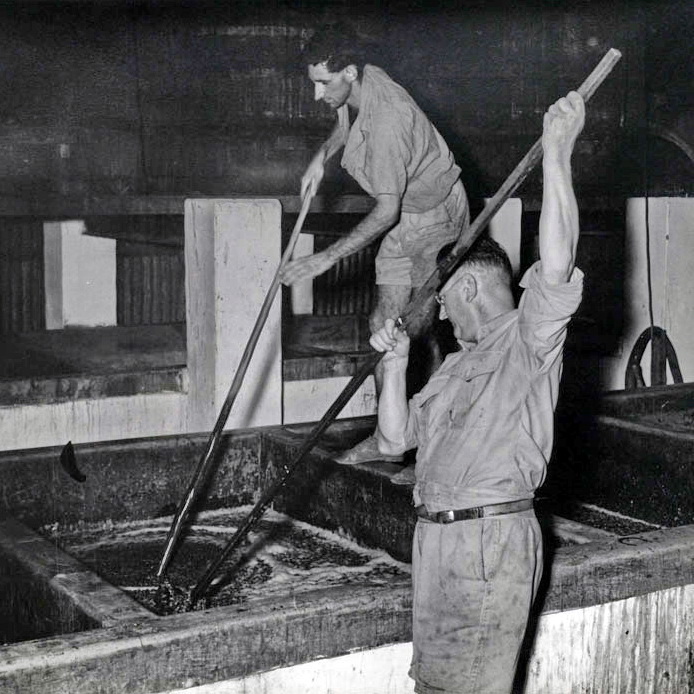 Maurice O’Shea at work – photo credit: Max Dupain
Maurice O’Shea at work – photo credit: Max Dupain
‘We’ve got this cascade of wonderful wines that we haven’t seen since O’Shea,’ James wrote. ‘If you turn the clock back 60 years, you might recognise some of these wines. He’s [Jim Chatto] really brought back the legacy of O’Shea big time.’
It was in the forties and early fifties that Maurice O’Shea made legendary wines for McWilliam’s. He died in 1956, long before most Australians discovered Hunter wine or table wine in general. The McWilliam family made fortified wines in Griffith, and what prompted them to buy into Hunter table wines at that time is one of life’s great mysteries. A friend in the trade tells me that Don McWilliam leant a helping hand to Murray Tyrrell in the fifties, which played a critical role in getting Tyrrells off the ground.
The Mount Pleasant Legacy
After the war, there were 6 wineries in the Hunter: Lindemans, McWilliam’s, Draytons, Tyrrells and Elliotts, and Dalwood if you stretched the boundaries. Mount Pleasant was the most picturesque, sitting on a hillside overlooking the valley just above their home vineyards. The McWilliam family also owned the Rosehill and Lovedale vineyards further afield, and ended up with hundreds of acres under vine.
Mount Pleasant had an awesome reputation when I was a young wine lover cutting my teeth on Hunter wines. I bought quite a few Mount Pleasant wines from the sixties, including Pinot Hermitage and Aucerot Riesling (Semillon was called Hunter Riesling in those days). Was there a Montils and a white Hermitage as well? Mount Pleasant served up some fascinating mysteries.
McWilliams also served up pretty ordinary wines. At first I thought it was me but, as I got to know the wines of Lindemans and Tyrrells, I changed my mind. Still, no one wanted to say a bad word about Mount Pleasant; instead, the eyes of connoisseurs would go soft and dreamy as they talked of O’Shea’s Mountain A and other classics.
Brian Walsh took over from Maurice O’Shea; he passed the winemaking baton to Phil Ryan in 1978 but stayed on until 1985. Despite the change, the wines remained unexciting, even pedestrian.
The Finest Vineyards in the Hunter
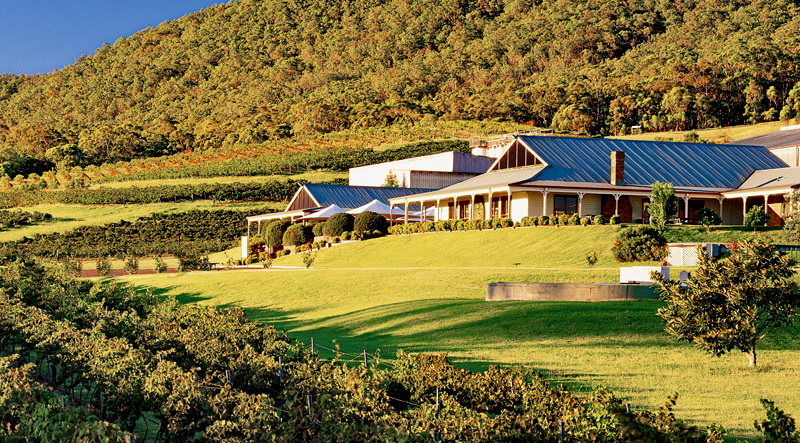
But how could McWilliams make such dull wines? Occasionally there was a decent red, once every few years or so. I never liked the Mount Pleasant whites much since they showed too much wet dog / old straw character for my liking. The mainstream wines then were Philip Hermitage and Elizabeth Semillon, well-priced wines that offered familiar faces on dubious restaurant wine lists. I didn’t go out of my way to find them.
People say great things about Phil Ryan, and I wouldn’t argue with them. He won and no doubt deserved the title of Hunter Valley Living Legend in 2009, in recognition of his 48 years of making and promoting Hunter wine. I can only talk about the wines, since I never met their makers: it seemed that Brian Walsh and Phil Ryan had lost the recipe Maurice O’Shea used to follow.
Phil retired in 2006 and Corey Ryan took over – I don’t think they’re related – Corey owns and runs Barossa winery Son of Eden with Simon Cowham). Corey was at the McWilliam’s winemaking helm for about 5 years. I can find nothing relevant on the trusty web about this period or about Corey’s achievements, which is odd because a friend tells me that he rattled cages and got some smart consultant winemakers to advise the family on the way forward.
Taking Care of Business
By now, the family had grown into the McWilliams Wine Group (MWG), which owned Brands at Coonawarra (sold last year), Barwang in the Hilltops region, and a majority stake in Margaret River’s Evans & Tate (MWG recently sold its controlling interest to Peter Fogarty). MWG has also bought back the shares it had sold to US giant E. & J. Gallo to get easier access to the US market.
If the winemaking left room for improvement, MWG’s marketing was a catastrophe. Would you believe a Coonawarra Cabernet under the Mount Pleasant label? No, I’m not kidding. Here’s what I wrote at the time: the label tells us that ‘this Cabernet Sauvignon celebrates the life of one of Australia’s greatest characters (Jack McWilliam).’ Which begged the question: Why wouldn’t you dedicate a special wine to celebrate Jack’s life, instead of an ordinary $11 red?
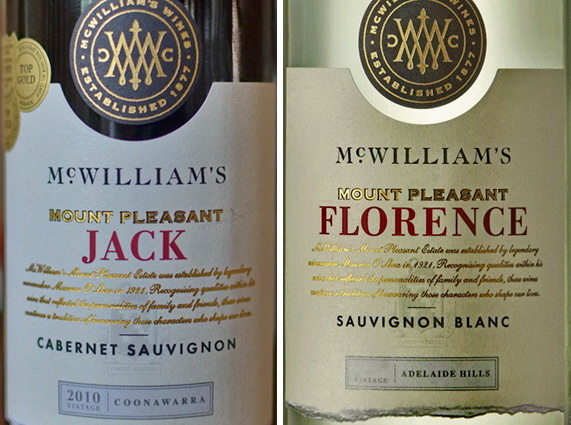
As if to show us that Jack was no aberration they added Florence, an Adelaide Hills Sauvignon Blanc, under the Mount Pleasant label. Other labels popped out of the woodwork at random as MWG acquired Echelon Wines and their labels Zeppelin, Armchair Critic and Over & Under. Then came Tightrope Walker from the Yarra Valley, Catching Thieves from Margaret River, Last Horizon from Tassie, and there was still the old Hanwood range.
The Big Impossible
Suddenly it all changed: Jim Chatto took over as chief winemaker in 2013 and stepped straight into the Hunter vintage of the century: 2014. With 20 Hunter vintages under his belt, Jim knew exactly what to do. Campbell Mattinson writes that Jim had ‘peered through the curtains of time to understand why and how O’Shea became one of Australia’s most revered winemakers of the 20th century.’
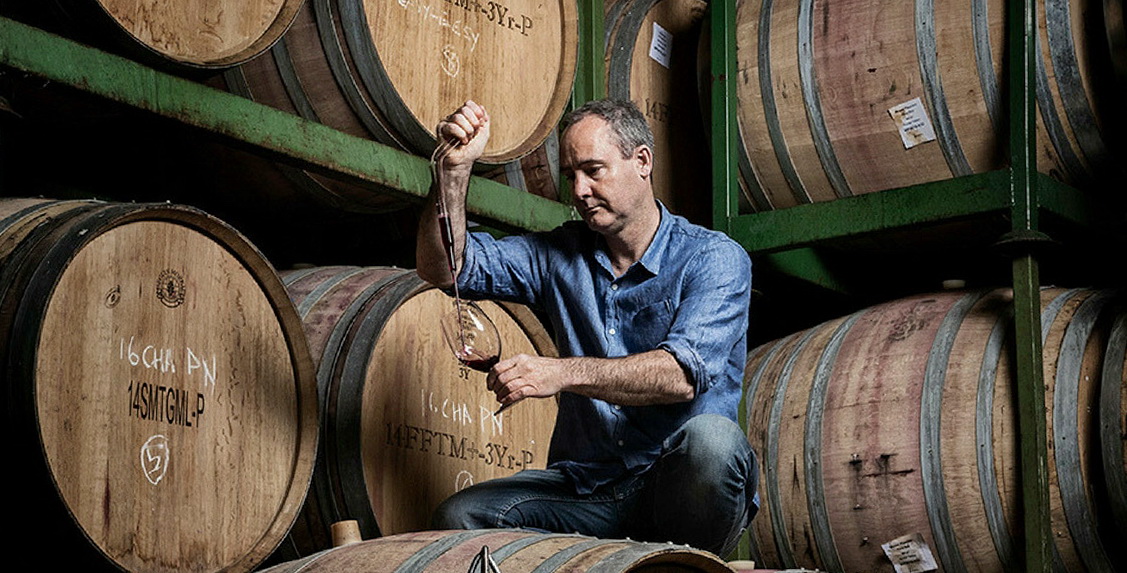 In 1986 Mount Pleasant made just 3 red wines: Philip Shiraz, Rosehill Shiraz and Old Paddock & Old Hill Shiraz, plus a Semillon or 2. In 2014, Mount Pleasant made 14 red wines and 3 Semillons. Will MWG focus harder on the treasure trove that is Mount Pleasant, from here on in? The single vineyard 2014 reds are on the shelves now, and the reviews are the best in many years.
In 1986 Mount Pleasant made just 3 red wines: Philip Shiraz, Rosehill Shiraz and Old Paddock & Old Hill Shiraz, plus a Semillon or 2. In 2014, Mount Pleasant made 14 red wines and 3 Semillons. Will MWG focus harder on the treasure trove that is Mount Pleasant, from here on in? The single vineyard 2014 reds are on the shelves now, and the reviews are the best in many years.
‘What’s special about Mount Pleasant is the vineyard sites,’ says Jim Chatto: ‘Old Hill (planted 1880) Old Paddock (planted 1921) Rosehill and Lovedale (planted 1946) All are unique and each with its own personality. There is also such a strong sense of history at Mount Pleasant. It’s like there is something in the air, something almost tangible. It’s inescapable for anyone that has worked there. ‘
It’s not just the sites: Few regions in Australia can boast so many famous vineyards planted with old vines. Maybe the Barossa. Like the frog waiting to be kissed by the princess, Mount Pleasant has been waiting for someone to break the spell and help it come back to life in its true form.
A Real Surprise
One of my gripes about MWG was to do with getting samples out of them, or rather not getting samples apart from a few desultory bottles here and there: $10 wines like Hanwood and E&T Classics. There were no responses to emails asking why, and I gave up.
Earlier this year, a young lady who filled in at MWG sent me a couple of samples of Single Vineyard wines that bowled me over. The Glenburnie Vineyard Tumbarumba Chardonnay 2014 is a benchmark Aussie chardy with perfect pitch. Exciting and classy beyond its $40 asking price, I wouldn’t hesitate to put it up against a $100 Burgundy. The Hillrose Vineyard Hilltops Shiraz 2014 wasn’t far behind, even for this lover of Cabernets. Both wines struck the perfect balance of fruit and oak, flavour and structure, all wrapped in a silky envelope.
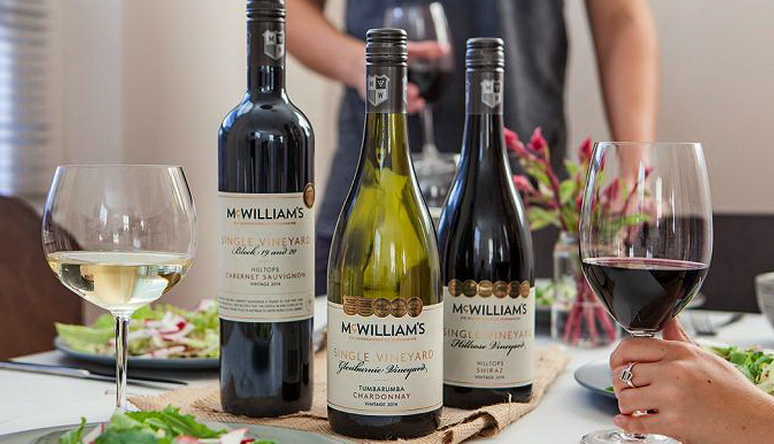
A box of samples received this week confirmed the lift in quality and change in style. The wines are more modern, with softer, sweeter, more intense fruit. It’s the new McW cool climate range featuring wines from Tumbarumba, Hilltops and Canberra, with the contours and the height of their vineyards marked on the labels in meters – 480 and 660. My only gripe is that they don’t reflect the terroirs the labels go to such pains to draw.
Sadly, the marketing mayhem continues: the new labels bear no family resemblance to any siblings in the MWG stable, and how do they fit in with the appellation range the company introduced in 2014? It included wines from Tumbarumba, Hilltops and Canberra. Now that the wines are tuned up, maybe it’s time to sort out the marketing.
Kim
